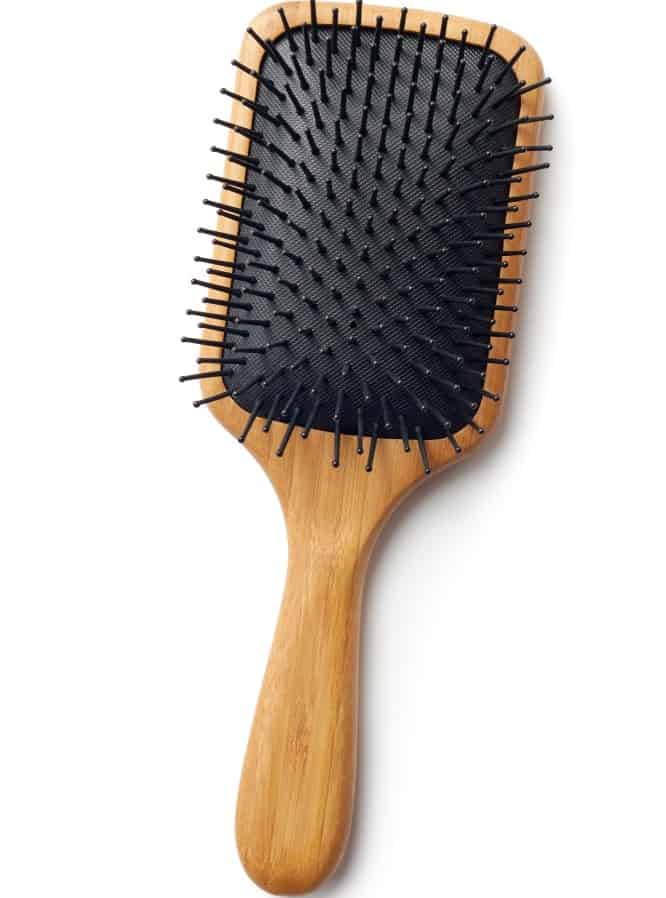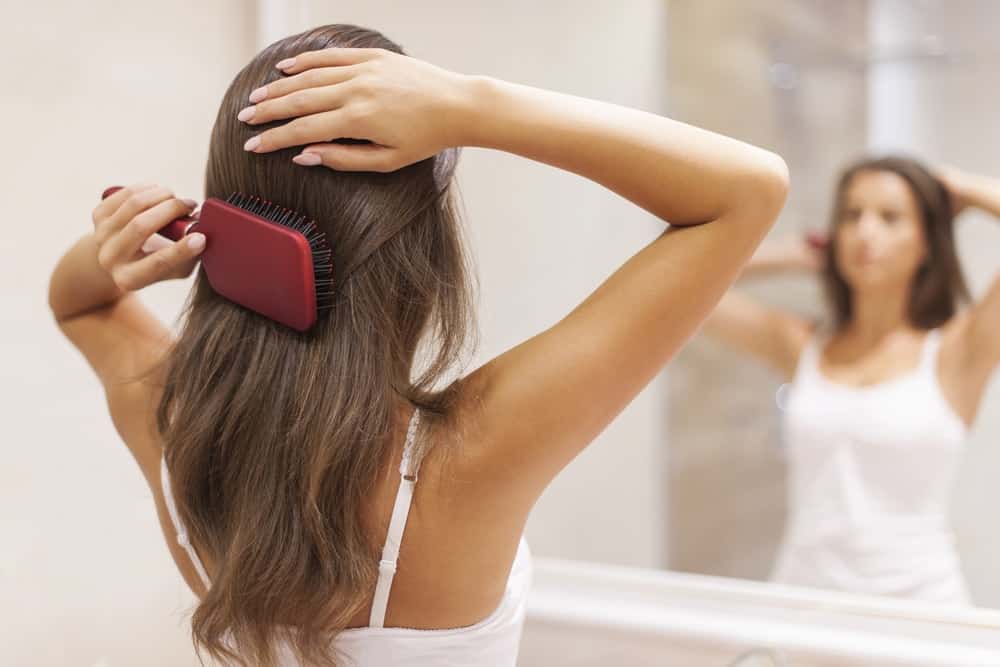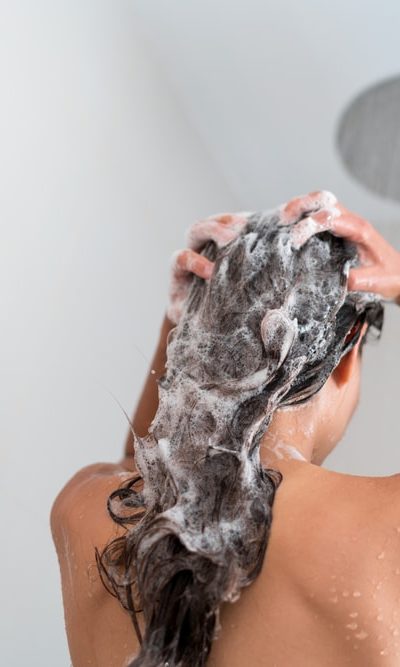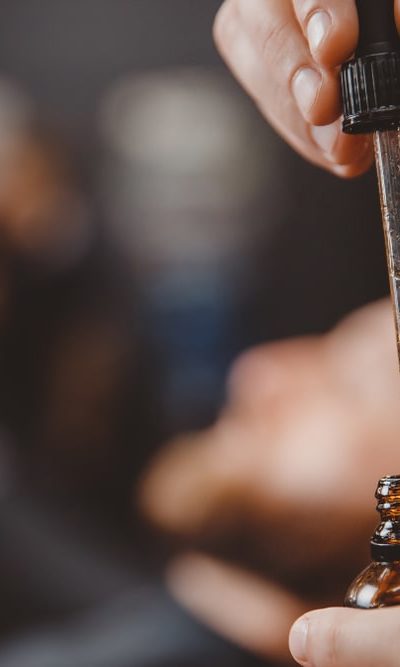Brushing your hair actually does more good for you than you might think. So it’s important that you understand why choosing the right brush is actually a pretty important decision.
The obvious point to start on is that brushing your hair makes it look better! From styling it to straightening it, to removing knots and tangles, brushing your hair allows you to achieve that desired look.
Brushing is also great for hair and scalp health. It helps remove stray hairs, dead skin cells, or dandruff, and any products, gels, or oils that you have put in your hair from the day before. Additionally, brushing your hair will spread out the natural oils which are produced by your scalp. This distributes the oils along the length of the hair follicles, which helps to moisturize your hair and make it appear shinier and fuller. By properly moisturizing the hair, it becomes stronger and more resilient to split ends and breakage.
And of course, all of these benefits are amplified if you choose the proper brush for your hair type. A proper brush works with your hair type to properly perform these functions, and you will see significantly more of the benefits mentioned above. With that being said, let’s dive into our comparison of two of the most popular brushes on the market, and help you see whether they’re right for you.
Wet Brush vs. Paddle Brush
Now that you have seen the benefits of brushing your hair, it’s time to get into the practical advice. Picking the right brush is key in achieving the benefits listed above, and we’re here to help you pick what’s best for you.
We’re comparing the traditional paddle brush against the Wet Brush, two popular choices on the market today. We want to help you make the decision that best agrees with your hair type and your brushing routine.
The Wet Brush

The first brush we’ll examine is the Wet Brush. First of all, the name Wet Brush doesn’t mean that it is a brush to be used exclusively on wet hair (although it can be). In fact, if you have particularly fine hair or weak hair, it is not advised to brush wet, as hair will be particularly vulnerable to damage and hair loss.
Instead, the Wet Brush is a variant of the paddle brush, with very noticeable differences in the bristles that act to set it apart, as we will explain below.
How Does a Wet Brush Work?
The Wet Brush is a relatively new type of brush that takes a few leaps forward in brush technology. Its main goal is for effective, smooth, pain-free brushing which helps it stand out from an ordinary hairbrush.
The Wet Brush offers an alternative to the traditionally rigid bristles of a paddle brush. We have probably all had the experience of brushing our hair, only to hit a knot and have the painful experience of yanking on the brush. The Wet Brush remedies this problem with their IntelliFlex bristles. The flexible bristles are soft enough to not yank at the hair but firm enough to work out knots. It is in this perfect balance of firmness that the true competitive advantage of the Wet Brush lies.
Aside from IntelliFlex, the Wet Brush also spaces the bristles quite effectively. There is enough space between the bristles so that they don’t become tangled, but still enough bristles to effectively brush all your hair.
It is these bristle and spacing innovations that truly set the Wet Brush apart. It aims to be the perfect paddle hairbrush that has that balance between too firm and not firm enough. Of course, the effectiveness of this balance will still depend on your hair type and length, and we’ll get into this next.
Who is it Right For?
A Wet Brush sure sounds great, with its perfectly spaced bristles and IntelliFlex technology. But truthfully, as with any brush, the perfect brush doesn’t exist for everyone. It really depends on your hair type as to whether this brush is right for you.
The Wet Brush is best if you have straight, long hair. This hair is not quite as prone to tough knots that you might experience with curly hair or frizzy hair. Long, straight hair has manageable curls that can be worked out with the gentle bristles of the Wet Brush. That being said, this is still quite a capable brush, and many will find that it does work just fine on their curly or wavy hair.
Also, you guessed it, the Wet Brush is ideal for wet hair. Typically, it is inadvisable to brush wet hair, as it is more prone to damage when wet. However, the soft bristles of the Wet Brush make it so that you can actually brush your hair while wet! We would still advise you to at least partially dry your hair before attempting. Additionally, if your hair is particularly thin or weak, we wouldn’t suggest this.
Overall, the Wet Brush is a versatile brush that will work on a wide variety of hair types. While not as strong and rigid as some other brushes, its bristles are still quite adept at tackling knots and curls, and the IntelliFlex technology helps keep it a comfortable experience overall.
What is a Paddle Brush?
Unlike the new technology boosted by the Wet Brush, a paddle brush is very much a tried and true alternative. It’s nothing new, but the fact it has been so popular for so long speaks to its effectiveness.
A paddle brush is a big, wide brush. Its bristles are rigid and strong, and they are attached to an air-filled cushion. This cushion allows the bristles to move around and adjust as you brush, which helps it to fit the contours and knots of your hair, helping to work out exactly what is needed. Their wide shape allows them to take on a lot of hair at once while adjusting to the intricacies of your hair with moveable bristles.
The flexibility allowed by the design makes this an ideal multi-purpose brush. It is a great detangler, and also for simply straightening it out and getting rid of that frizzy look. If you only have one brush, a paddle brush might be all you need.
How to Use a Paddle Brush
Using a paddle brush is pretty straightforward. For detangling purposes, you want to start at the outside of your hair. Work gently to avoid yanking, and work out any knots. Work your way all the way in toward the roots, and you will have a fully knot-free head of hair.
The other primary purpose of a paddle brush is for hair straightening or smoothing. For best results, you want to use a paddle brush right after you have washed your hair. Dry your hair so it is almost completely dry, and smooth your hair with the brush. Of course, you can use a paddle brush on dry hair as well.
Who is it Right For?
A paddle brush is a very versatile brush. It can detangle hair and leave you with that sleek, straight look. Because this brush is meant to detangle and leave hair straight, it is most suitable for those who have either straight or wavy hair. This allows the brush to work with the natural flow of your hair, and work out the knots and tangles as it goes.
It is also worth noting that there are several types of paddle brushes, varying mostly on the material used in the bristles. If you have thicker or more difficult hair, you might want to opt for a strong, rigid bristle to work out the tangles. For those with thinner, shorter, or weaker hair, softer bristles will do the trick.
Making Your Choice
We hope this guide has been helpful for you in choosing between two of the most popular brush types on the market. Although these brushes do have their differences, they also have many similarities as well. Both are ideal for straightening and detangling hair and work with your hair’s natural flow to painlessly achieve that free-flowing look. We hope this guide has helped you spot these differences, and pick the one that is best for you.
Of course, there is also the possibility that neither of these brushes works for your hair type. Not to worry, there are many other brush types on the market. From a round brush to a teasing brush, to combs of all sorts, there is something out there that will work with your hair type.
So if a paddle brush or a Wet Brush is right for you, then try one out today! If not, remember that these brushes are only two choices of many, and there is something out there for someone of any hair type.







